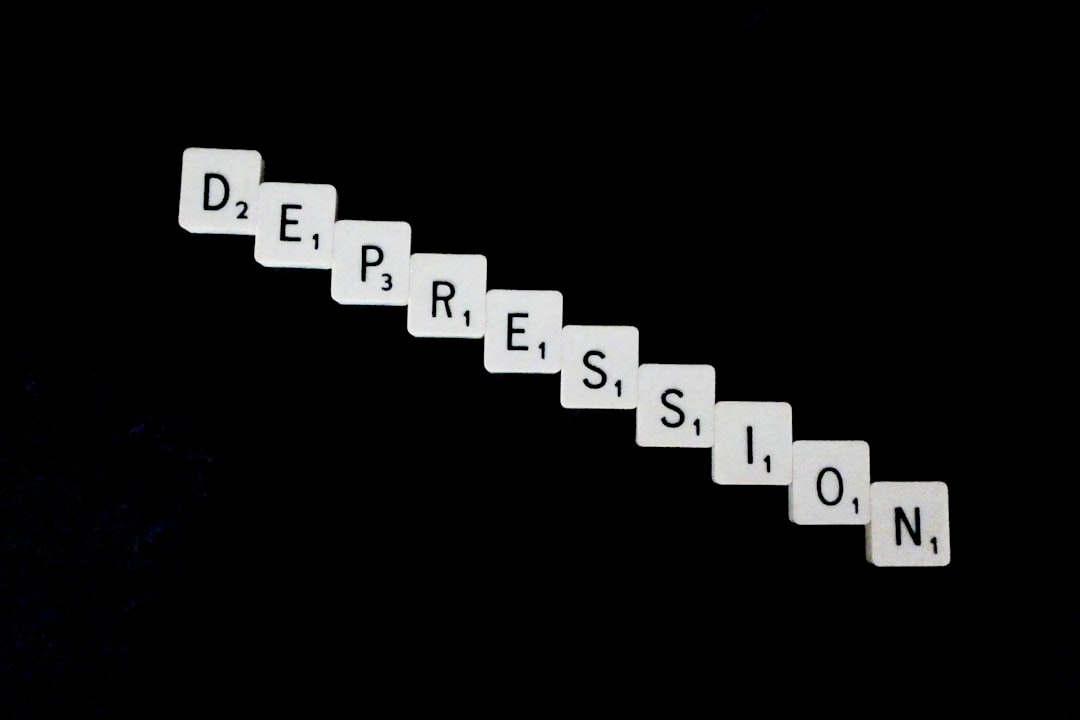Understanding mental illness is crucial in fostering a compassionate society that recognizes the complexities of human behavior and emotional well-being. Mental illnesses, which encompass a wide range of disorders affecting mood, thinking, and behavior, are prevalent across all demographics. According to the World Health Organization, approximately one in four individuals will experience a mental health issue at some point in their lives.
This staggering statistic underscores the necessity for a deeper comprehension of mental health conditions, as they can significantly impact not only the individuals affected but also their families, communities, and workplaces. Moreover, understanding mental illness is essential for dismantling the barriers that prevent individuals from seeking help. Many people suffer in silence due to a lack of awareness about mental health issues or fear of judgment.
By fostering an environment where mental health is openly discussed and understood, we can encourage those in need to seek support and treatment. This understanding can lead to early intervention, which is often critical in managing mental health conditions effectively. When society embraces the complexities of mental illness, it paves the way for more effective treatment options and a supportive network for those affected. Check out the latest health tips and information at Lifemedicallab.
Key Takeaways
- Understanding mental illness is crucial for providing support and empathy to those affected.
- Common misconceptions about mental illness can perpetuate stigma and hinder progress in treatment and support.
- Stigma can have a profound impact on individuals with mental illness, leading to discrimination and barriers to seeking help.
- Challenging stereotypes and myths about mental illness is essential for creating a more inclusive and understanding society.
- Education plays a vital role in breaking the stigma surrounding mental illness and promoting awareness and advocacy.
Common Misconceptions About Mental Illness
Misconceptions about mental illness abound, often perpetuated by media portrayals and societal stereotypes.
One prevalent myth is that mental illness is a sign of personal weakness or character flaw.
This misconception can lead to feelings of shame and guilt among those suffering from mental health issues, discouraging them from seeking help.
In reality, mental illnesses are complex conditions influenced by a combination of genetic, biological, environmental, and psychological factors. Understanding that these disorders are not a reflection of one’s character is vital in promoting empathy and support for those affected. Another common misconception is that individuals with mental illnesses are inherently dangerous or violent.
This stereotype is not only misleading but also harmful, as it contributes to the stigma surrounding mental health. Research has shown that people with mental health conditions are more likely to be victims of violence than perpetrators. By challenging these misconceptions and presenting accurate information about mental illness, we can foster a more informed public that recognizes the humanity of those affected and reduces the fear and discrimination they often face.
The Impact of Stigma on Those with Mental Illness

Stigma surrounding mental illness can have profound effects on individuals’ lives, often exacerbating their conditions and hindering their recovery. The fear of being labeled or judged can prevent individuals from seeking necessary treatment or disclosing their struggles to friends and family. This isolation can lead to worsening symptoms, increased feelings of hopelessness, and even suicidal ideation. The internalization of stigma can create a vicious cycle where individuals feel trapped by their conditions and the societal perceptions surrounding them. Furthermore, stigma can manifest in various forms, including structural stigma within healthcare systems, workplaces, and educational institutions. For instance, individuals may face discrimination when applying for jobs or promotions due to their mental health history.
This systemic bias not only affects their professional lives but also contributes to economic instability and social exclusion. Addressing stigma requires a multifaceted approach that includes public education, policy changes, and advocacy efforts aimed at creating an inclusive environment for those with mental health conditions.
Challenging Stereotypes and Myths
| Metrics | 2019 | 2020 | 2021 |
|---|---|---|---|
| Number of Stereotypes Challenged | 150 | 180 | 200 |
| Percentage of People Engaged in Discussions | 75% | 80% | 85% |
| Number of Myths Debunked | 100 | 120 | 130 |
Challenging stereotypes and myths about mental illness is essential for creating a more informed society. One effective way to combat these misconceptions is through storytelling and sharing personal experiences. When individuals openly discuss their struggles with mental health, it humanizes the issue and allows others to see beyond the stereotypes.
For example, public figures who share their journeys with mental illness can inspire others to seek help and foster a sense of community among those facing similar challenges. Additionally, educational initiatives aimed at dispelling myths about mental illness can play a significant role in changing perceptions. Schools, workplaces, and community organizations can implement training programs that provide accurate information about mental health conditions and promote empathy towards those affected.
By equipping individuals with knowledge about the realities of mental illness, we can dismantle harmful stereotypes and encourage a culture of understanding and support.
The Role of Education in Breaking the Stigma
Education serves as a powerful tool in breaking the stigma surrounding mental illness. By integrating mental health education into school curricula, we can equip young people with the knowledge they need to understand their own mental health and that of others. Programs that teach emotional intelligence, coping strategies, and the importance of seeking help can empower students to prioritize their well-being and support their peers.
Early education on mental health can foster a generation that views these issues through a lens of compassion rather than judgment. Moreover, workplace training programs focused on mental health awareness can create supportive environments for employees. Organizations that prioritize mental health education demonstrate a commitment to employee well-being, which can lead to increased productivity and job satisfaction.
By normalizing conversations about mental health in professional settings, companies can help reduce stigma and encourage employees to seek help when needed.
Ways to Support and Empower Those with Mental Illness

Supporting individuals with mental illness requires a multifaceted approach that encompasses empathy, understanding, and practical assistance. One effective way to empower those affected is by actively listening to their experiences without judgment. Creating safe spaces where individuals feel comfortable sharing their thoughts can foster connection and validation.
This support can be as simple as checking in on someone who may be struggling or offering to accompany them to therapy sessions. Additionally, advocating for accessible mental health resources is crucial in empowering those with mental illnesses. This includes supporting policies that increase funding for mental health services, ensuring that treatment options are available regardless of socioeconomic status.
Community organizations can play a vital role in providing resources such as support groups, counseling services, and educational workshops that empower individuals to take charge of their mental health journey.
The Connection Between Mental Illness and Physical Health
The relationship between mental illness and physical health is intricate and often reciprocal. Research has shown that individuals with chronic physical conditions are at a higher risk for developing mental health issues such as depression and anxiety. Conversely, those with mental illnesses may experience physical health problems due to factors such as poor self-care, medication side effects, or lifestyle choices influenced by their conditions.
For instance, someone dealing with severe depression may struggle to maintain a healthy diet or engage in regular physical activity, leading to further deterioration of their physical health. Understanding this connection is essential for providing holistic care that addresses both mental and physical well-being. Healthcare providers should adopt an integrated approach that considers the interplay between these two aspects of health.
By recognizing the importance of treating both physical and mental health conditions simultaneously, practitioners can improve overall patient outcomes and enhance quality of life.
The Intersectionality of Mental Illness and Social Factors
Mental illness does not exist in a vacuum; it intersects with various social factors such as race, gender, socioeconomic status, and cultural background. These intersections can significantly influence an individual’s experience with mental health issues and access to care. For example, marginalized communities often face additional barriers to accessing mental health services due to systemic inequalities such as poverty or discrimination.
This intersectionality highlights the need for culturally competent care that acknowledges the unique challenges faced by different populations. Furthermore, social factors such as stigma can vary across cultures, affecting how individuals perceive and respond to mental illness within their communities. In some cultures, discussing mental health may be taboo or viewed as a sign of weakness, leading individuals to suffer in silence.
Addressing these cultural nuances is essential for creating effective interventions that resonate with diverse populations and promote equitable access to mental health resources.
The Power of Language in Shaping Perceptions of Mental Illness
Language plays a pivotal role in shaping societal perceptions of mental illness. The words we use can either perpetuate stigma or promote understanding and acceptance. For instance, using derogatory terms or labeling individuals based on their conditions reinforces negative stereotypes and dehumanizes those affected by mental illness.
Conversely, employing person-first language—such as “a person with depression” rather than “a depressed person”—can foster empathy by emphasizing the individual rather than reducing them to their diagnosis. Moreover, public discourse around mental health has evolved significantly over recent years, with an increasing emphasis on using language that promotes awareness and understanding. Campaigns aimed at destigmatizing mental illness often focus on changing the narrative surrounding these conditions through positive messaging and inclusive language.
By being mindful of our language choices, we can contribute to a cultural shift that values compassion over judgment.
Promoting Mental Health Awareness and Advocacy
Promoting mental health awareness is essential for creating a society that values emotional well-being alongside physical health.
Advocacy efforts aimed at raising awareness about mental illness can take many forms, from grassroots campaigns to large-scale initiatives led by organizations dedicated to improving mental health care access.
These efforts often focus on educating the public about the signs and symptoms of various mental health conditions while emphasizing the importance of seeking help.
Additionally, engaging individuals with lived experience in advocacy efforts can amplify voices that are often marginalized in discussions about mental health policy. By sharing personal stories and insights, advocates can humanize the issue and inspire others to take action—whether through volunteering, donating to relevant causes, or participating in awareness events such as Mental Health Awareness Month.
Building a More Inclusive and Understanding Society
Building a more inclusive society requires collective effort from individuals, communities, organizations, and policymakers alike. It involves creating environments where open discussions about mental health are encouraged and where individuals feel safe seeking help without fear of judgment or discrimination. Initiatives aimed at promoting inclusivity—such as community workshops focused on empathy training or support groups for those affected by mental illness—can foster understanding among diverse populations.
Moreover, policymakers play a crucial role in shaping the landscape of mental health care by advocating for policies that prioritize accessibility and equity in treatment options. By investing in community-based resources and ensuring that all individuals have access to quality care regardless of their background or circumstances, we can work towards dismantling the barriers that perpetuate stigma and discrimination against those with mental illnesses. In conclusion, understanding mental illness is not just an individual responsibility; it is a collective endeavor that requires empathy, education, advocacy, and action from all sectors of society.
By challenging misconceptions, supporting those affected by mental illness, promoting awareness, and fostering inclusivity, we can create a world where everyone has the opportunity to thrive mentally as well as physically.
If you or someone you know is struggling with anxiety, it’s important to be aware of the common symptoms to watch for. According to a recent article on IMPS Education, some of these symptoms include excessive worry, restlessness, and difficulty concentrating. Seeking support from a therapist, like the one mentioned in this article, can provide valuable treatment options for managing extreme anxiety. It’s crucial to prioritize mental health and seek help when needed.
FAQs
What is mental illness?
Mental illness refers to a wide range of mental health conditions that affect a person’s thinking, emotions, behavior, and ability to function in daily life. These conditions can include depression, anxiety disorders, schizophrenia, bipolar disorder, and many others.
What are the causes of mental illness?
Mental illness can be caused by a combination of genetic, biological, environmental, and psychological factors. Traumatic experiences, stress, brain chemistry, and family history can all contribute to the development of mental illness.
What are the symptoms of mental illness?
Symptoms of mental illness can vary depending on the specific condition, but common symptoms may include changes in mood, behavior, and thinking, as well as feelings of sadness, anxiety, confusion, and difficulty concentrating.
How is mental illness diagnosed?
Mental illness is diagnosed through a comprehensive evaluation by a mental health professional, which may include a physical exam, psychological assessment, and discussion of symptoms and personal history. There are no specific laboratory tests for mental illness, so diagnosis is based on the individual’s reported experiences and observed behavior.
What are the treatment options for mental illness?
Treatment for mental illness can include medication, psychotherapy, support groups, and lifestyle changes. In some cases, hospitalization or residential treatment may be necessary. The goal of treatment is to alleviate symptoms, improve functioning, and enhance overall well-being.
Can mental illness be prevented?
While it may not be possible to prevent all cases of mental illness, there are steps that can be taken to reduce the risk. These include seeking early intervention for mental health concerns, maintaining a healthy lifestyle, managing stress, and seeking support from friends, family, and mental health professionals.

